Imagine a place so cold your eyelashes freeze in seconds, where the wind howls like a beast, and the ground is nothing but ice for miles. Sounds like a terrible place to live, right? Well, not for these incredible animals.
From fearless penguins that waddle through blizzards to massive whales cruising beneath sheets of ice, Antarctica is home to some of the most fascinating creatures on Earth. They don’t just survive—they thrive in one of the harshest environments imaginable.
So, who exactly rules this frozen kingdom? Get ready to meet 23 animals that call Antarctica home, each one proving that when it comes to surviving the cold, Mother Nature doesn’t mess around.
Emperor Penguin
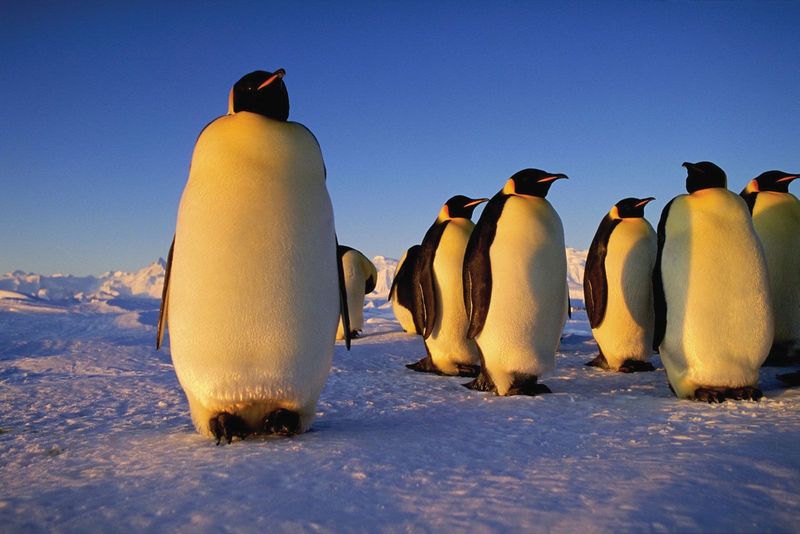
Emperor Penguins are renowned as the largest of all penguin species, standing nearly four feet tall. They brave treacherous conditions during the Antarctic winter, showcasing extraordinary adaptability. These penguins huddle together for warmth, taking turns on the outer edges to shield themselves from the biting cold. Male Emperor Penguins are known for their nurturing role, incubating eggs atop their feet under a flap of skin. Their striking black, white, and yellow plumage makes them a symbol of resilience in the frozen landscape. These birds are truly perfectly designed for life in icy extremes.
Weddell Seal
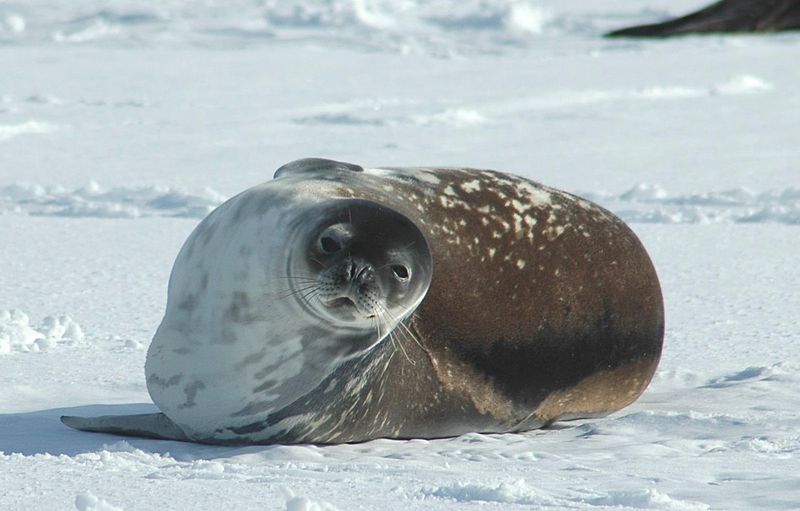
The Weddell Seal is a master of survival in the frozen waters of Antarctica. With its sleek, spotted grey coat and expressive eyes, it’s perfectly adapted to its icy home. These seals can dive deeper and hold their breath longer than most marine mammals, reaching depths of 600 meters and staying submerged for up to an hour. They maintain breathing holes in the ice using their teeth, a testament to their ingenuity. Weddell Seals are vital members of the Antarctic ecosystem, playing a crucial role in the food web as both predator and prey.
Adélie Penguin
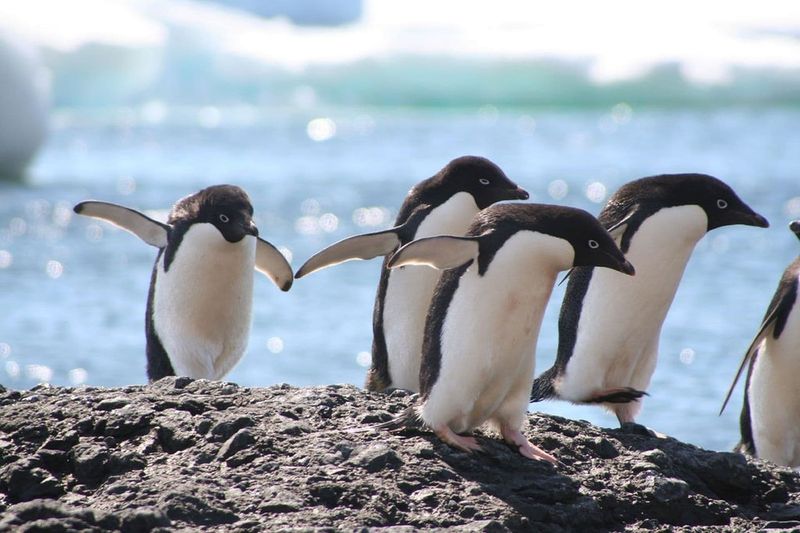
Adélie Penguins, with their classic tuxedo-like appearance, are among the most widespread penguin species in Antarctica. These small, agile birds are excellent swimmers, using their wings as flippers to navigate through icy waters with ease. They thrive in large colonies, often numbering in the thousands, where they build nests out of stones. Adélie Penguins are known for their energetic antics and curious nature. As climate change impacts their icy habitat, these resilient birds adapt by shifting their ranges and breeding sites. Their perseverance in the face of environmental changes is truly remarkable.
Antarctic Fur Seal
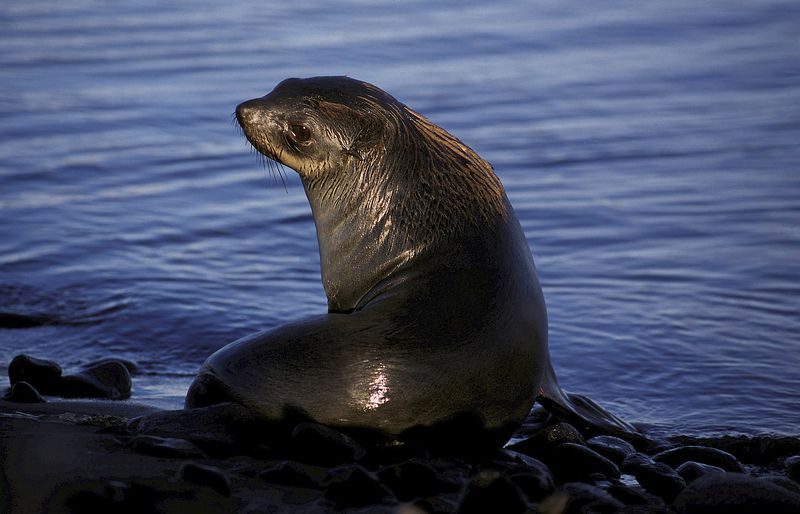
The Antarctic Fur Seal, with its thick, waterproof fur, is a playful and agile swimmer. Found mostly on sub-Antarctic islands, they have made a remarkable recovery from near-extinction due to past hunting. These seals are social animals, often seen frolicking in the water or lounging on rocky shores. Males establish territories and form harems during the breeding season, showcasing their competitive nature. Their diet mainly consists of krill, fish, and squid, making them integral to the marine ecosystem. The success story of the Antarctic Fur Seal is a testament to nature’s resilience.
Leopard Seal
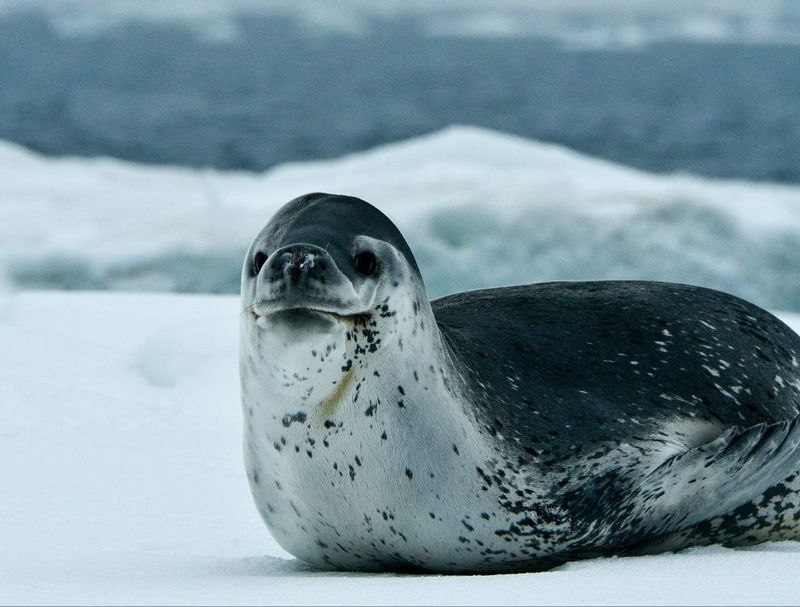
Leopard Seals are the apex predators of the Antarctic. They boast a sleek, powerful body and a distinctive spotted coat. These formidable hunters primarily feed on penguins, fish, and smaller seals. Their adaptability and keen senses make them efficient predators in the icy waters. Beyond their fierce hunting capabilities, Leopard Seals are curious and intelligent, often interacting with researchers and their equipment. Despite their solitary nature, these seals play a pivotal role in the Antarctic ecosystem, maintaining the balance by controlling prey populations. Their presence is a crucial element of the frozen food chain.
Chinstrap Penguin
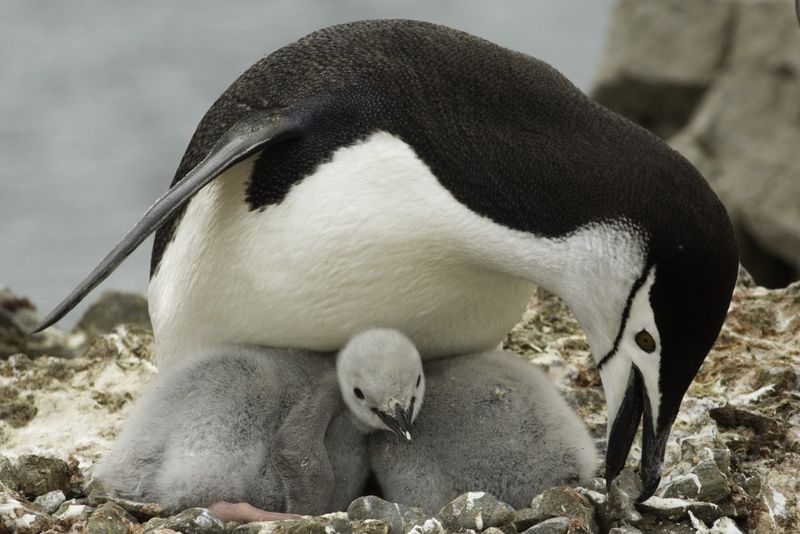
Chinstrap Penguins, named for the distinctive thin black line under their beaks, are one of the most recognizable penguin species. They inhabit the icy shores and rocky outcrops of Antarctica and sub-Antarctic islands. These penguins are known for their loud, braying calls and social nature, often forming large colonies. Chinstrap Penguins feed mainly on krill and fish, diving into freezing waters with agility and precision. Despite facing threats from climate change and predation, their populations remain robust. Their adaptability and resilience are key to their survival in the harsh Antarctic environment.
Snow Petrel
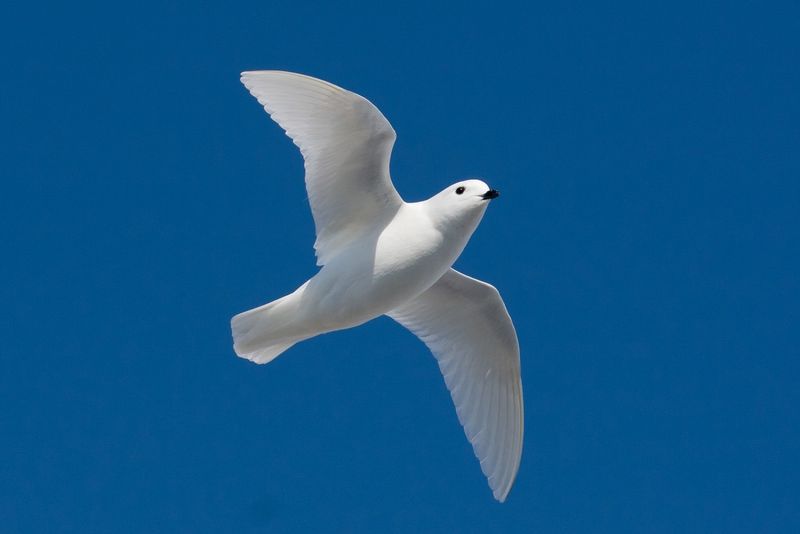
The Snow Petrel, with its pristine white plumage, is a true symbol of the Antarctic wilderness. These birds are among the few that breed exclusively in Antarctica, nesting on cliff edges and rocky outcrops. Snow Petrels are remarkable fliers, traversing vast distances over the icy seas in search of food, primarily krill and fish. Their keen navigation skills and endurance make them well-suited to their harsh surroundings. Despite the extreme cold, they thrive in their icy habitat, showcasing the incredible adaptations of Antarctic wildlife. Their presence is a poetic touch to the stark landscape.
Crabeater Seal
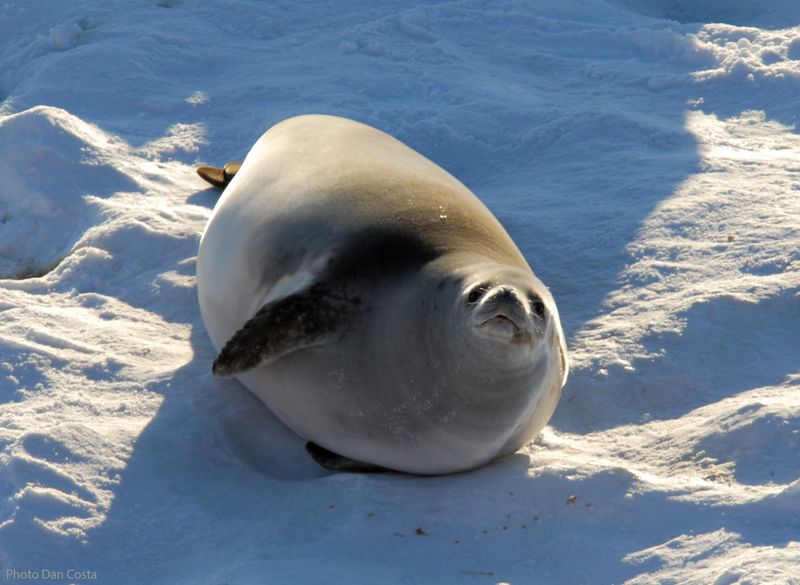
Despite the name, Crabeater Seals do not actually eat crabs; their diet primarily consists of Antarctic krill. These seals are plentiful in Antarctica, with streamlined bodies and light-colored fur that blends seamlessly with the icy surroundings. They are exceptional swimmers and can often be seen resting on ice floes. Crabeater Seals have specialized teeth that filter krill from the water, an adaptation crucial for their survival. Their large populations play a significant role in the Antarctic food web. Their ability to thrive in such an inhospitable environment highlights their remarkable adaptability.
Antarctic Krill
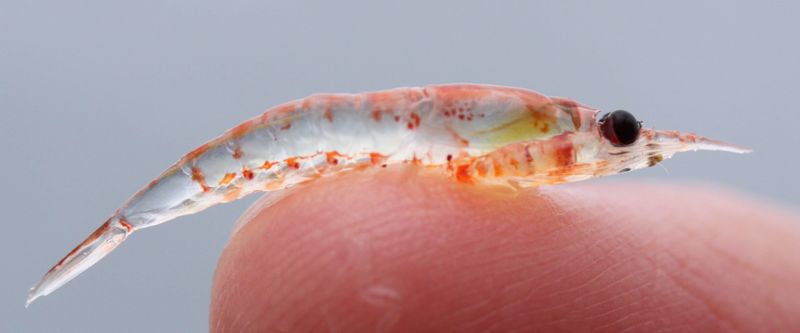
Antarctic Krill, tiny yet mighty, are the cornerstone of the Antarctic food chain. These small crustaceans swarm in vast numbers in the Southern Ocean, providing a crucial food source for many marine species. Despite their size, their impact on the ecosystem is immense. Krill feed on phytoplankton, converting sunlight into energy through the food web. They undergo daily vertical migrations, which contribute to carbon cycling in the ocean. As a vital resource, their populations affect the health of the entire Antarctic ecosystem. The resilience of these tiny creatures is a marvel of nature.
South Polar Skua
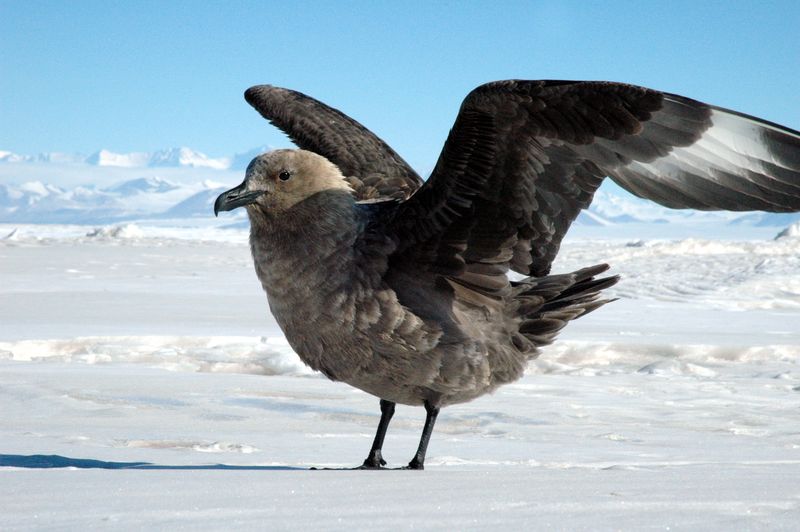
The South Polar Skua is a formidable seabird known for its robust build and predatory nature. With brown plumage and a distinctive hooked beak, it roams the Antarctic skies. Skuas are opportunistic feeders, preying on eggs and chicks of other seabirds, and scavenging from carcasses. Their aggressive behavior and adaptability have earned them a fearsome reputation. Despite their reputation, Skuas play an essential role in the ecosystem, controlling seabird populations and recycling nutrients. They are a testament to the diverse and intricate web of life in Antarctica, thriving in its extreme conditions.
Ross Seal
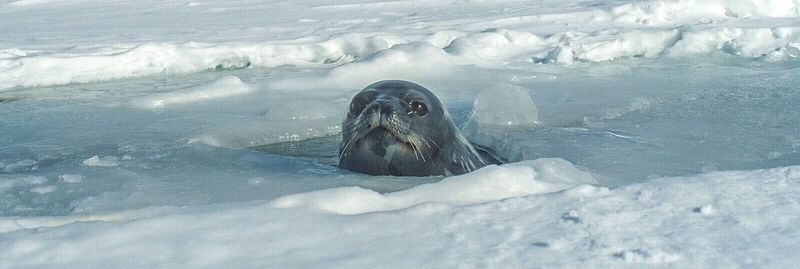
The Ross Seal is one of the least known and elusive of the Antarctic seals. With a short snout and large, expressive eyes, it is uniquely adapted to its icy environment. These seals are solitary creatures, often found resting on remote ice floes. Their vocalizations, consisting of haunting, siren-like calls, resonate through the chilly Antarctic air. Ross Seals primarily feed on squid and fish, diving deep into the ocean’s depths. Their elusive nature and remote habitat make them one of the most mysterious inhabitants of Antarctica’s frozen realm, often evading human observation.
Antarctic Minke Whale
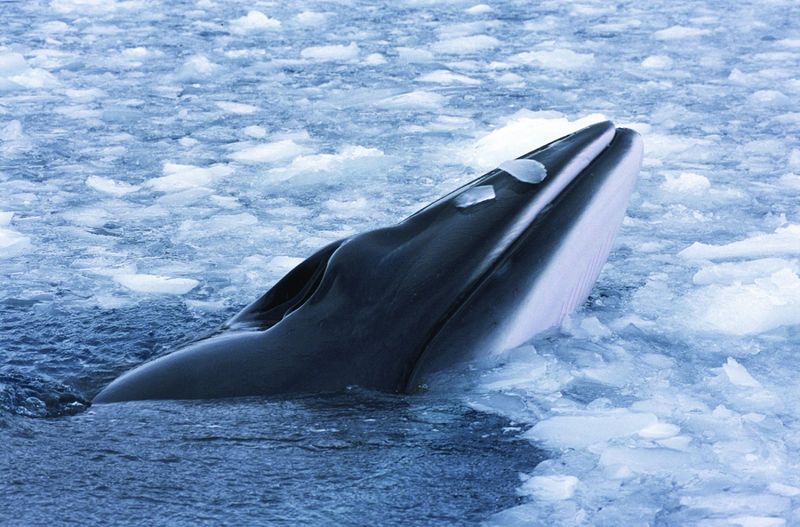
Antarctic Minke Whales are the smallest of the baleen whales, yet they are perfectly suited to thrive in the Southern Ocean. With their sleek, dark bodies, they cut through icy waters with ease. These whales primarily feed on krill and small fish, using baleen plates to filter their food from the water. Their agile nature allows them to navigate through pack ice, an impressive feat for a creature of their size. Minke Whales play a vital role in the Antarctic ecosystem, influencing krill populations and maintaining the balance within the marine food web.
Antarctic Silverfish
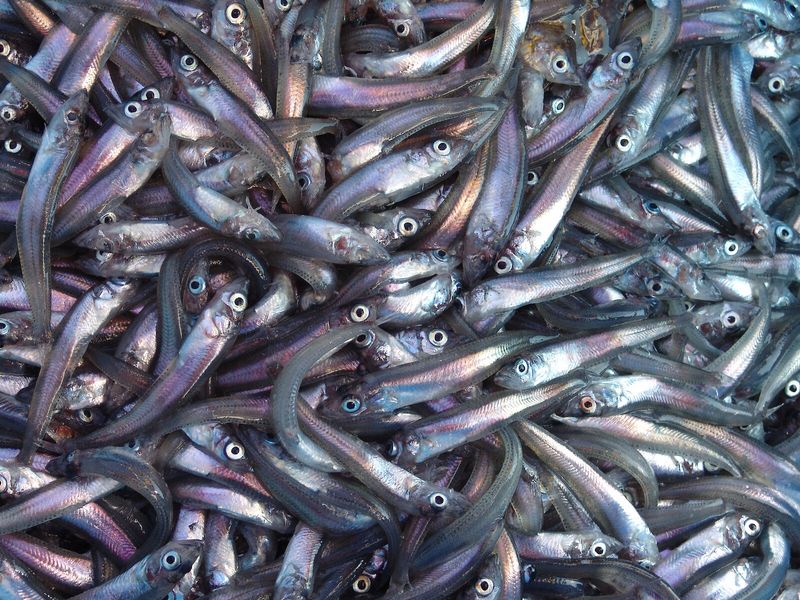
The Antarctic Silverfish is a key player in the Southern Ocean’s ecosystem. These slender, silvery fish are a primary food source for many predators, including penguins, seals, and whales. They inhabit the frigid waters, thriving in temperatures that would be inhospitable to many other species. Silverfish play a significant role in nutrient cycling and energy transfer within the Antarctic food web. Their abundance and resilience are crucial for the survival of many Antarctic animals. As climate change alters their habitat, the adaptability of the Antarctic Silverfish will be tested, highlighting their ecological importance.
Macaroni Penguin
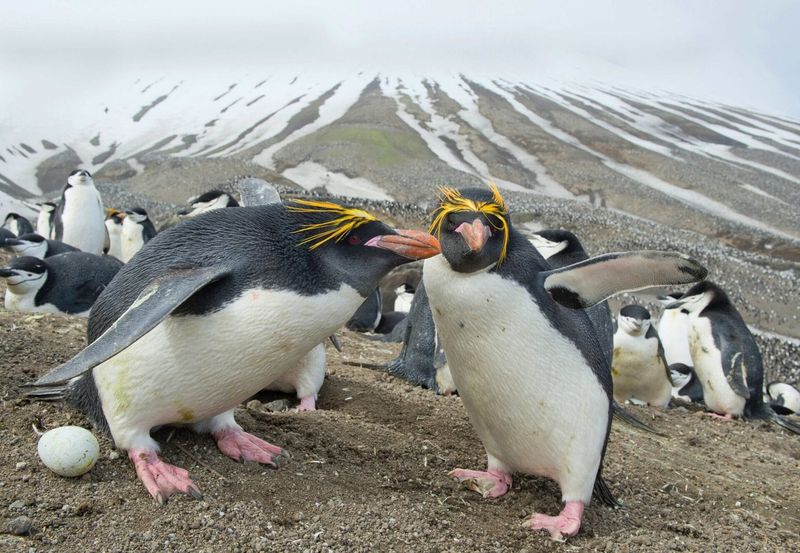
Macaroni Penguins, with their distinctive yellow crests, are one of the most recognizable and charismatic penguin species. They inhabit the sub-Antarctic and Antarctic Peninsula, often forming large colonies on rocky slopes. These penguins are excellent swimmers, diving deep to catch krill and other small marine creatures. Their loud calls and social behavior make them a lively presence in their colonies. Despite facing threats from climate change and overfishing, Macaroni Penguins continue to thrive, showcasing their resilience and adaptability. Their vibrant appearance adds a splash of color to the icy landscape.
King Penguin
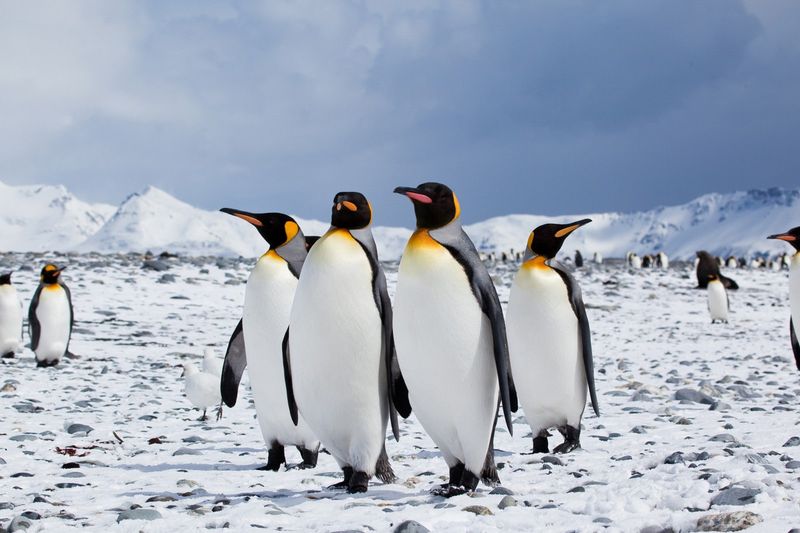
King Penguins, the second largest penguin species, are known for their striking appearance and regal demeanor. Their elegant black, white, and orange plumage makes them a captivating sight along the shores of sub-Antarctic islands. These penguins have a complex breeding cycle, with both parents sharing responsibilities for incubating eggs and feeding chicks. King Penguins primarily feed on fish and squid, diving to impressive depths in search of prey. Their social structure and cooperative behavior are fascinating aspects of their life in the wild. The survival of King Penguins highlights the delicate balance within the Antarctic ecosystem.
Blue Whale
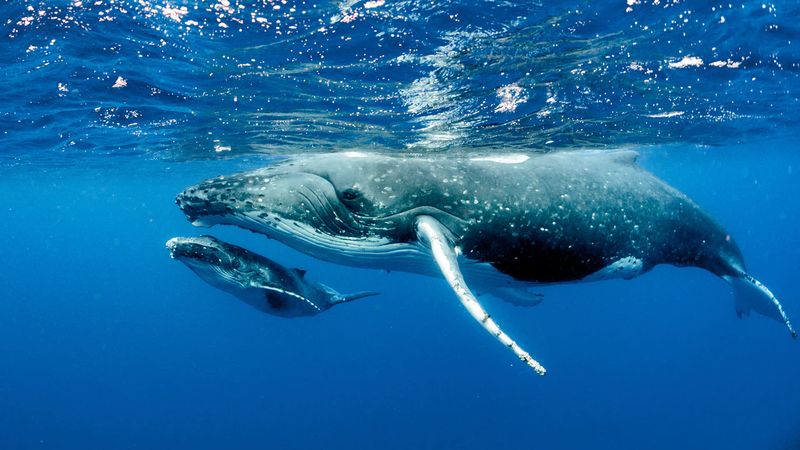
The Blue Whale, the largest animal on Earth, graces the icy waters of Antarctica with its immense presence. These gentle giants can reach up to 100 feet in length and weigh as much as 200 tons. Despite their size, Blue Whales feed primarily on tiny krill, consuming vast quantities to sustain their massive bodies. Their graceful movements through the Southern Ocean are a breathtaking spectacle. Blue Whales play a pivotal role in marine ecosystems, influencing the distribution of krill populations. Their recovery from past whaling is a testament to conservation efforts and nature’s resilience.
Antarctic Icefish
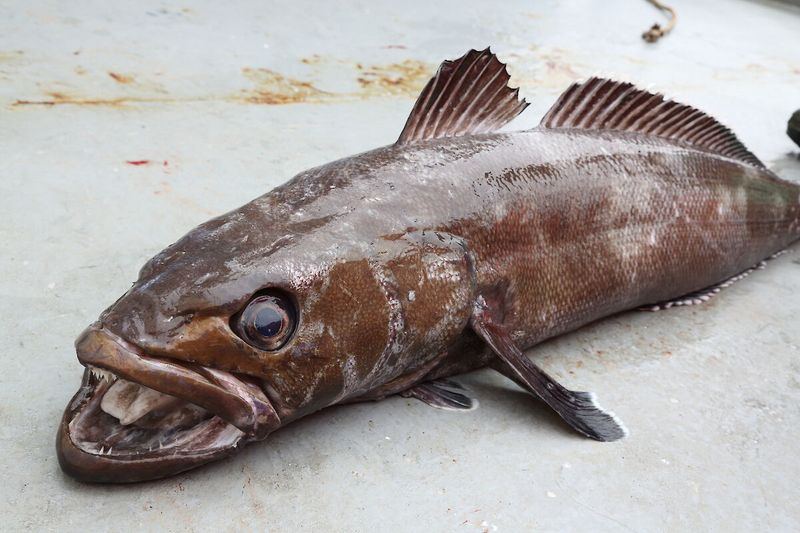
Antarctic Icefish are extraordinary for their translucent bodies and unique adaptations. Unlike most fish, they lack hemoglobin, giving their blood a colorless appearance. This adaptation allows them to thrive in the oxygen-rich waters of the Southern Ocean. Icefish primarily feed on krill and small fish, contributing to the Antarctic food web. Their ability to survive in sub-zero temperatures showcases the incredible diversity of life in extreme environments. As climate change impacts the Antarctic ecosystem, the Icefish’s adaptability will be crucial for its survival. These fish are a fascinating study of evolutionary innovation.
Gentoo Penguin

Gentoo Penguins are easily identifiable by their bright orange beaks and feet. These charming birds inhabit the Antarctic Peninsula and sub-Antarctic islands, where they form colonies on rocky beaches. Gentoos are strong swimmers, diving to impressive depths to catch krill and fish. Their playful and curious nature endears them to many who visit Antarctica. Despite facing threats from climate change and habitat disturbance, they demonstrate remarkable resilience. The adaptability of Gentoo Penguins is a testament to their survival skills in a rapidly changing world. Their presence adds a lively touch to the Antarctic landscape.
Orca (Killer Whale)
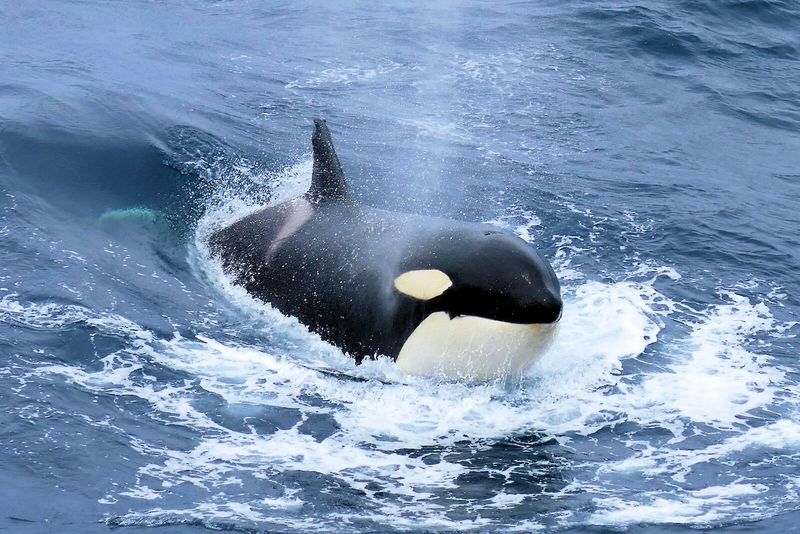
Orcas, or Killer Whales, are apex predators in the Antarctic marine environment. Known for their striking black and white patterns, they are highly social animals, often traveling in pods. Orcas exhibit complex hunting techniques, targeting seals, penguins, and even large whales. Their intelligence and adaptability make them formidable hunters. As climate change alters the Antarctic ecosystem, Orcas face new challenges and opportunities. These iconic creatures play a vital role in maintaining the balance of the marine food web. Observing Orcas in their natural habitat is a highlight for anyone visiting the icy waters of Antarctica.
Kelp Gull
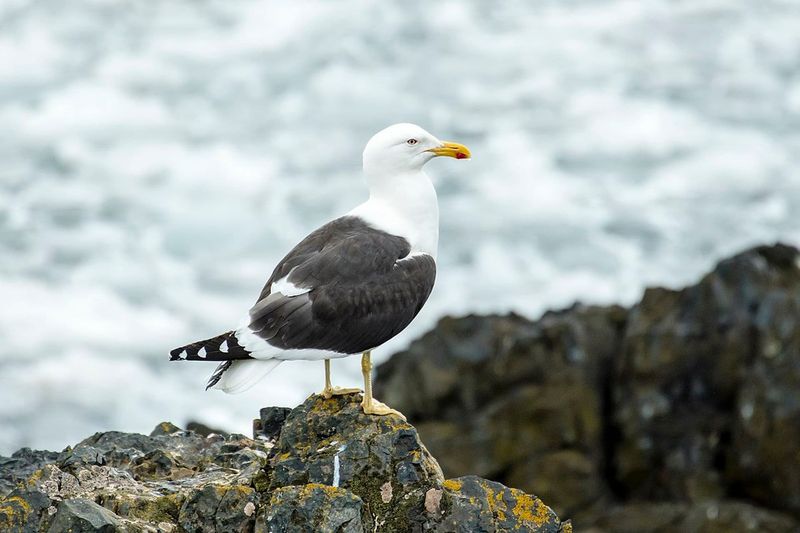
The Kelp Gull, with its contrasting black and white plumage, is a common sight along the coastal regions of Antarctica. These adaptable seabirds are opportunistic feeders, scavenging for food along the shorelines. They play a vital role in the ecosystem by controlling populations of invertebrates and recycling nutrients. Kelp Gulls are known for their loud calls and curious nature, often seen following ships or exploring human settlements. Their adaptability to various environments highlights their resilience in the face of changing conditions. The presence of Kelp Gulls adds dynamic energy to the Antarctic seascape.
Antarctic Tern

Antarctic Terns are graceful seabirds known for their sleek bodies and sharp beaks. These agile flyers migrate long distances, from their breeding grounds in Antarctica to more temperate regions. Terns feed primarily on fish and krill, skillfully diving into the ocean to catch their prey. Their endurance and navigational abilities are truly remarkable, enabling them to thrive in diverse environments. As indicators of ocean health, Antarctic Terns play a crucial role in monitoring ecosystem changes. Their elegant presence and tireless journeys capture the wonder of avian life in the Antarctic.
Antarctic Prion
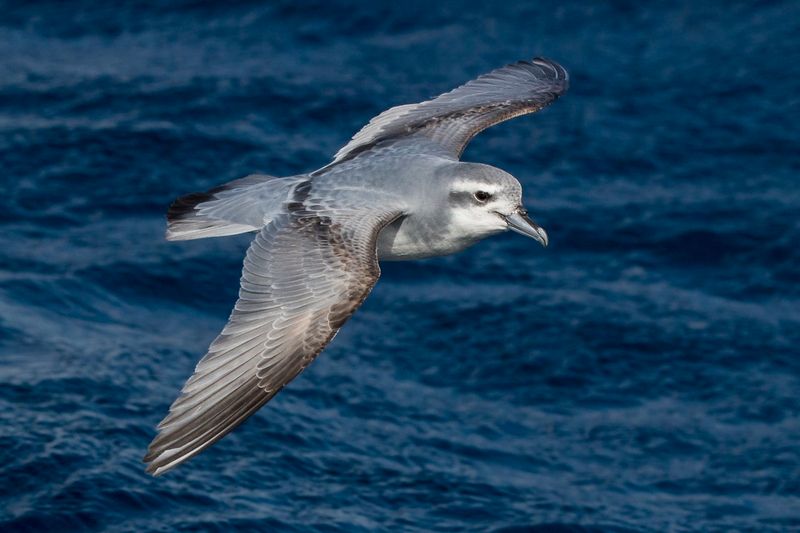
The Antarctic Prion is a small seabird known for its distinctive blue-grey plumage and graceful flight. These birds inhabit the Southern Ocean, often seen gliding over the waves in search of plankton and small fish. Prions are efficient foragers, using their specialized bills to filter food from the water. Their ability to cover vast distances in search of food highlights their adaptability. As climate change impacts oceanic conditions, the survival of Antarctic Prions depends on their resilience. These birds are a testament to the diversity and beauty of life in the harsh Antarctic environment.
Elephant Seal
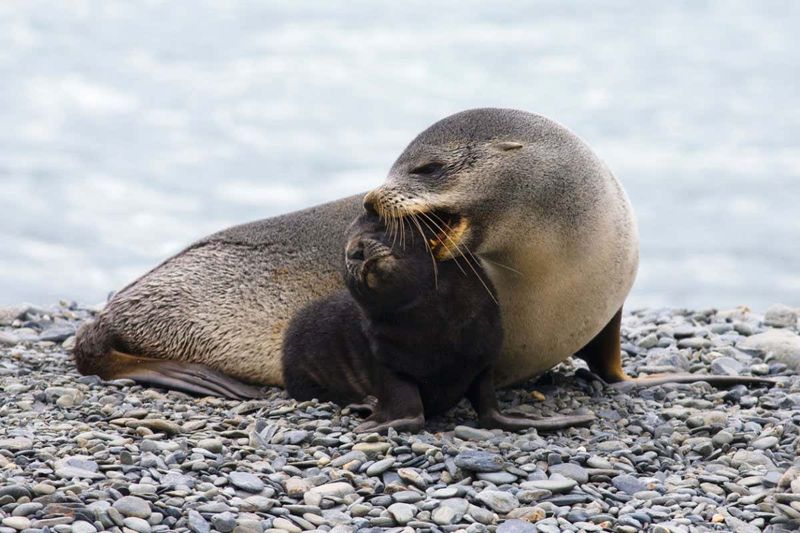
Elephant Seals are the true giants of the seal world. Males possess a distinctive trunk-like nose, which they use to produce powerful vocalizations during the breeding season. These seals inhabit Antarctica’s icy coasts, where they form large colonies. Elephant Seals are deep divers, reaching impressive depths in search of squid and fish. Despite their size, they are agile in the water, covering great distances during their migrations. As apex predators, they play a significant role in the marine food web, influencing prey populations. The resilience of Elephant Seals is a captivating aspect of Antarctic wildlife.

